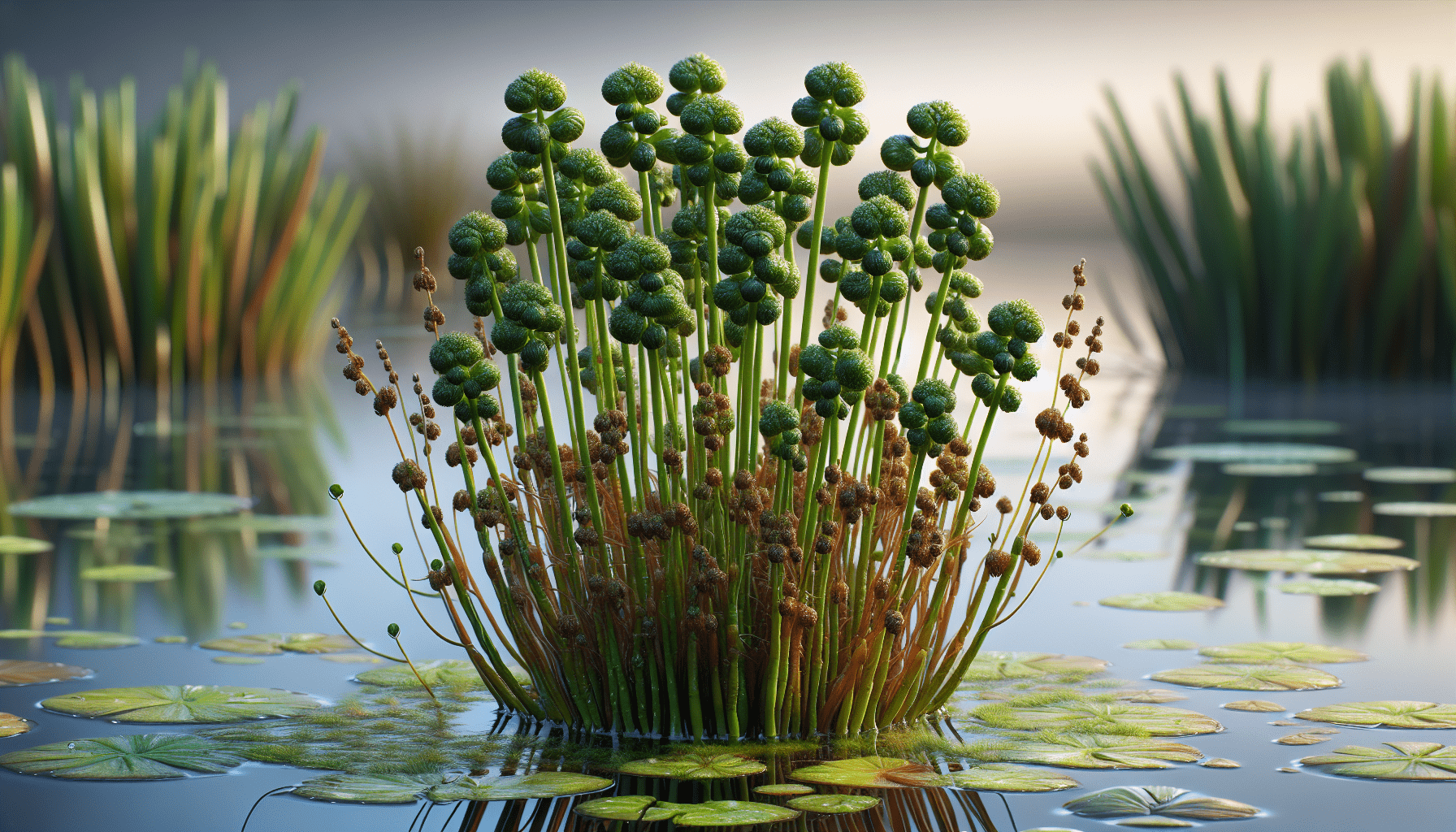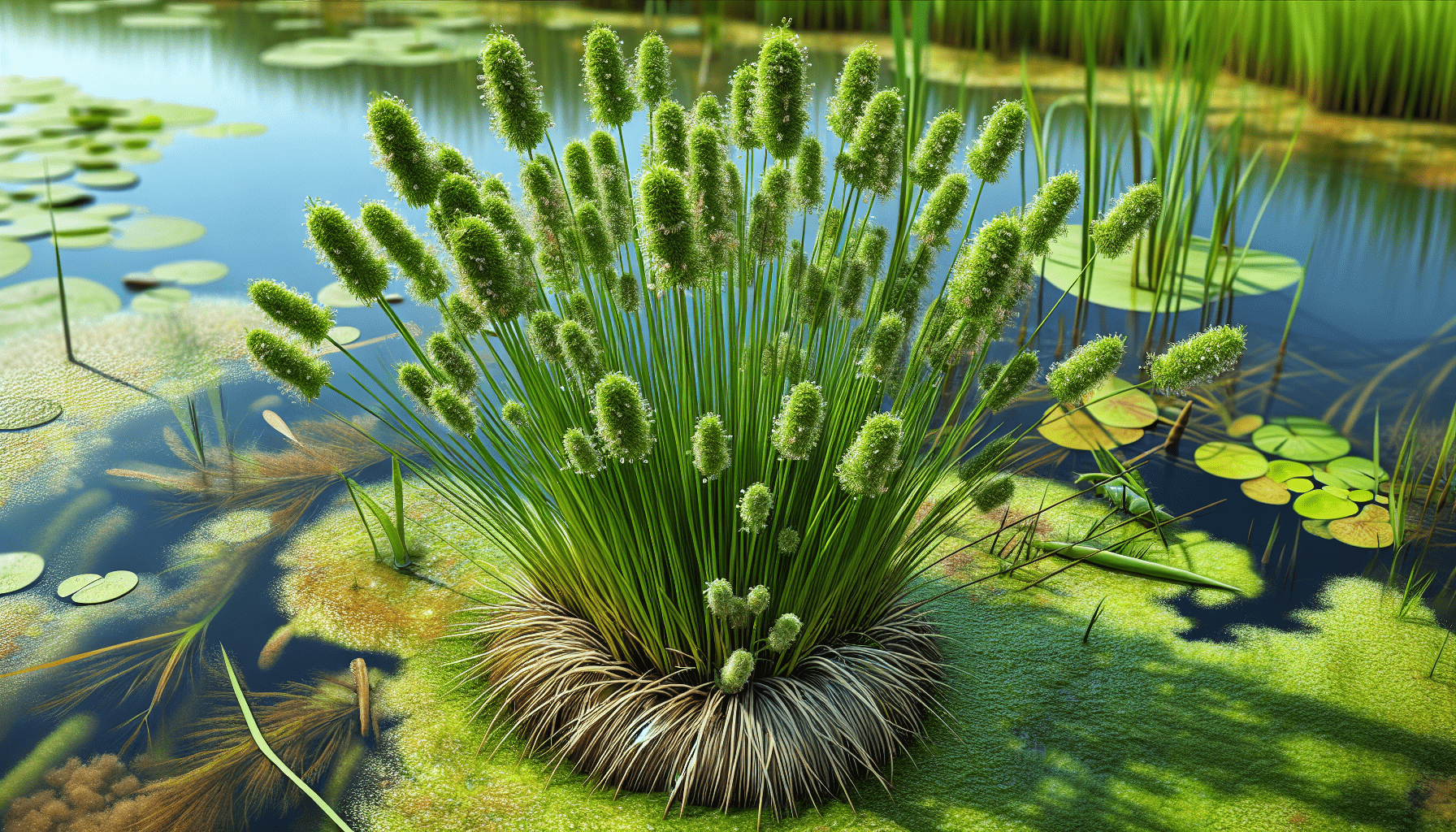You are about to embark on an enlightening journey through the fascinating world of aquatic botany, focusing on a particular species, Juncus effusus. This voluminous article enlightens you about the life, the growth, and the characteristics of this pervasive water-loving plant, commonly referred to as ‘aquatic weed’. Inexplicably embedded in nature’s massive network, these reed-like plants often go unnoticed. Yet, understanding the intricate life mechanisms of this plant might unlock new possibilities for managing aquatic environments and pave the way for the next generation of sustainable practices. So, prepare your intellect for a deep, yet engaging immersion into the curious existence of this ‘aquatic weed’, Juncus effusus.

Overview of Juncus Effusus
Juncus effusus, commonly known as the soft rush, is a perennial wetland plant known for its tufted, round culms and distinctive umbrella-like inflorescences.
Common names and synonyms
There are numerous common names and synonyms associated with Juncus effusus based on regional variations. Commonly, it is referred to as the common rush, soft rush or bog rush. In the scientific community, it is synonymous with its binomial name Juncus effusus, derived from the Latin words “juncus” meaning rush and “effusus” meaning spreading.
Plant classification and family
In the plant classification hierarchy, Juncus effusus falls under the Plantae kingdom, Magnoliophyta division, and Lilopsida class. This perennial grassy weed is a part of the Juncaceae or the rush family, renowned for their hardy nature and adaptability to moist and marshy habitats.
Geographical distribution and habitat
Juncus effusus has a wide geographical distribution. It is native to temperate regions of the Northern Hemisphere including North America, Europe, and Asia and has been widely introduced into Southern Hemisphere regions like Australia and South America. The soft rush thrives predominantly in wetland habitats like marshes, fens, and wet meadows, and alongside streams and water bodies. It prefers constantly wet soils with poor to moderate nutrient levels.
Physical Characteristics of Juncus Effusus
The physical traits of Juncus effusus are distinctive and make it easily identifiable. Decoding its botanics aids in understanding its ecological functionality and how it interacts with its environment.
Description of leaves
The leaves of Juncus effusus are unique in their absence. Instead, it has long, cylindrical green stems called culms that are often mistaken for leaves. These culms are upright, round, smooth, and hollow with a sharp tip.
Flower structure and characteristics
The inflorescences of this plant are made up of small, dense clusters of yellowish to brown flowers that burst from the side of the plant, giving it an appearance of an umbel. Each flower possesses three sepals, three petals and six stamens.
Root system and shoot description
Juncus effusus uses its robust, fibrous root system to anchor itself into the soggy ground, which not only helps it to absorb water but also stabilizes the soil. The shoots are upright columns capable of tolerating inundation and heavy winds.
Life Cycle of Juncus Effusus
Juncus effusus has a life cycle that is as hardy and adaptable as its physical structure suggests.
Growth stages
It all starts with the sprouting of the soft rush from seeds sowed in saturated soils. The young plant grows quickly, establishing its fibrous root system and producing its hollow, round stems. By the end of its first growing period, soft rush forms dense tufts of upright stems.
Seasonal growth and changes
Although soft rush is a perennial plant, it experiences significant seasonal shifts. The onset of spring coaxes the plant into initiating new growth. During summer, the plant reaches its full height and the flowers develop and mature. It is during this time that seed spread occurs, ensuring the propagation of the species. In autumn and winter, there is a decline in the vitality of the plant, but the root system and some stems remain dormant, readying itself for growth in the subsequent spring.
Reproduction methods
Soft rushes reproduce primarily through their seeds, but are also capable of vegetative propagation. The seeds fall around the parent plant or get washed away by water or wind. These seeds, upon finding favorable growing conditions, germinate, allowing for new plants to establish themselves.

Ecological Implications of Juncus Effusus
The presence of Juncus effusus in an ecosystem not only brings about changes in the biodiversity and the biotic interactions of the locality but also influences the abiotic features of the ecosystem.
Role in the ecosystem
Playing an essential role in many aquatic ecosystems, Juncus effusus aids in soil stabilization, minimizes erosion, and offers a nesting habitat for many bird species. Furthermore, this plant can act as a biofilter aiding in nutrient uptake from the water system, thus reducing the nutrient load in water and enhancing water quality.
Interaction with other species
Soft rush interacts with other plant species and serves as a food source and habitat for various species of waterfowl, insects, and mammals. Moreover, its sturdy structure provides a terrain for the growth of several other plants.
Effects on water quality and flow
By absorbing excess nutrients and filtering water passing through its root system, Juncus effusus helps maintain water quality. Additionally, it slows down the water flow, lessening soil erosion and sedimentation in water bodies.
Juncus Effusus as an Invasive Species
Despite its benefits, Juncus effusus can pose threats to biodiversity when it becomes invasive, overgrowing and outcompeting local plants.
Impacts on biodiversity
In regions where it is introduced, the dense growth of soft rush can choke up water bodies and wetlands, leading to a reduction in plant biodiversity. This affects the overall ecosystem as it can pose a threat to the local fauna that depends on the native plants for sustenance.
Methods of spread
Seeds and vegetative fragments of Juncus effusus are the methods of spread of this plant and these dispersed materials can survive for long periods, thereby increasing its invasiveness.
Prevention and control tactics
Prevention and control of Juncus effusus largely depend on a combination of mechanical, chemical, and biological control methods. Mechanical control involves physically removing the species, while chemical control involves the use of specific herbicides. Finally, biological control utilizes the plant’s natural enemies to limit its spread.
Cultivation of Juncus Effusus
Although it’s thought of as a weed in many situations, in water gardens, ponds, or boggy areas, Juncus effusus is an ideal candidate for cultivation due to its versatile nature and aesthetic appeal.
Cultivation conditions required
Soft rush requires full to partial sunlight, permanently moist to wet soils, and slightly acidic conditions for better growth.
Propagation methods
Propagation of Juncus effusus is efficiently achieved either by sowing seeds into a wet substrate or by dividing the established plants.
Maintenance and care
This plant requires minimal maintenance – regular watering and occasional trimming to promote bushier growth are enough for the soft rush’s upkeep.
Uses and Applications of Juncus Effusus
The usefulness of Juncus effusus stretches beyond ecology and aesthetics. Its applications stem from history and tradition, and have modern and prospective use.
Historical and traditional uses
Historically, Juncus effusus has been utilized for various purposes. Owing to its flexibility and durability, it has been used for making mats, baskets, and even ropes.
Modern applications
In modern times, Juncus effusus’s potential as a biofilter and its aesthetic value in various types of gardens has led to its inclusion in environmental management plans and landscape design respectively.
Possible future uses
Future uses of Juncus effusus could include phytoremediation, in which plants are used to detoxify contaminated areas. Given this plant’s ability to absorb and filter nutrients, it has potential for such application.
Potential Hazards and Toxicity of Juncus Effusus
Although having several advantages, some potential hazards and levels of toxicity are associated with Juncus effusus
Allergenic potential
Juncus effusus is not known to be a significantly allergenic plant. However, more research is needed on this aspect to make a definite statement.
Toxicity to animals and humans
There is not much information available about the direct toxicity of Juncus effusus to animals or humans. However, consumption should be avoided as this plant is not part of the human diet.
Environmental concerns
Although not directly harmful, Juncus effusus can sometimes be too successful in its growth, threatening local biodiversity by outcompeting native species.
Research on Juncus Effusus
Juncus effusus has been used in scientific researches aiming to understand its biology, ecology, and potential uses.
Previous findings
Previous studies have revealed the plant’s potential for nutrient uptake and waste treatment and explored its interaction with the environment.
Current research
Current research focuses on understanding the ecological benefits of Juncus effusus and its applications in land management and landscape design.
Potential future research areas
Despite the extensive study already conducted on Juncus effusus, much is still unknown about this plant species. Future research might focus on exploring more about its potential in phytoremediation and its interaction with other species.
Juncus Effusus in Folklore and Culture
Culturally, Juncus effusus has significant roles in many communities.
Symbolism and spiritual associations
In some cultures, Juncus effusus symbolizes humility and endurance. It is often integrated into cultural practices and ceremonies, bearing spiritual significance.
Historical references and significance
Historically, Juncus effusus has been invaluable to societies for its practical uses in creating tools and artifacts.
Inclusion in literature and art
Due to its unique form, it has been a focus of many artistic and literary works, illustrating various aspects of nature and coexistence. Its distinct characteristics make it a symbol of resilience and versatility.